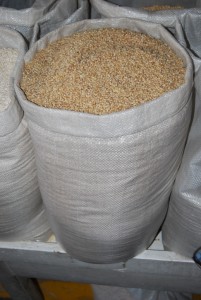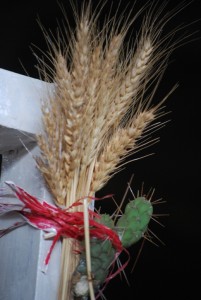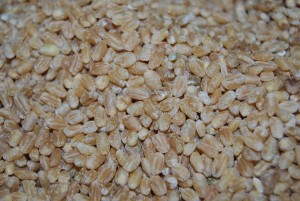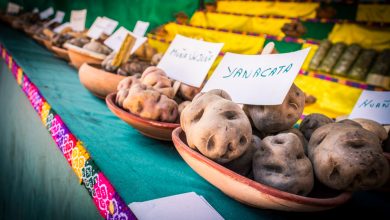Holy, Nutritious, and Exotic Wheat

One can only imagine how strange Peru must have seemed to the Spaniards who arrived with the invading force and in the following years. Here they did not have most of the foods they knew at home. Instead, they found corn (maize), hot peppers, and potatoes. Today these foods are common place and part of the Spanish diet, but then they may as well have come from Mars they were so strange. The first time Spanish crops were cultivated in Peru it must have struck the Spaniards as a marvel.
That the Spanish succeeded in introducing their crops and foodways is witnessed in today’s gastronomy of the Imperial City of Cuzco, where Spanish and Inca often go hand in hand. But this success must not have been easy, given that crops generally have climatic limits for successful cultivation, especially at the high altitudes of Cuzco.
While this difficulty is not much commented, the great nineteenth century Cuzco writer Clorinda Matto de Turner, most famous for her novel Birds without a Nest (Aves sin nido), described the moment in her book Cuzco Traditions (Tradiciones cuzqueñas).

As the title of the book suggests, Matto de Turner is following the path hewn by Ricardo Palma. But whatever the value of that imitation or its literary value, the fact that she actually gathers information on the moment Spanish food first became available makes it valuable for us.
Matto de Turner writes that the first spears of asparagus to grow in Cuzco were so esteemed that they merited a fiesta. She also notes that the first pomegranates produced in Lima were carried in the litter belonging to the Holy Sacrament.

But Matto de Turner reserves her greatest attention for wheat, which she relates to Christ and the food of the Eucharist. While most Spaniards passionately searched for gold, Matto de Turner observes that don Pablo Castilla de Nocedo instead turned his attention to farming in Cuzco and especially to golden heads of wheat in the area near the town of Oropesa.

The feast that was held during the first wheat harvest in Oropesa is not something for which Matto de Turner found much recorded, however she imagines it must have been splendid.
In the first days of the month of July, of the year of our Lord 1563 a small stage was raised with curtains of fine cloth on the property of Nocedo by the wheat fields. With all his friends gathered there, the harvest of wheat heads so beautiful and full as in pharaoh’s dream were there deposited.
That day more than one pipe of wine was emptied, the guitar was strummed and songs were sung in praise of the precious heads of wheat, a part of which was offered to the Church of Santo Domingo for the sacramental hosts and there was general praise among the neighbors who could not help but praise don Pablo Castillo de Noboa who had planted such a rich field for the honor of religious devotion and the well-being of his neighbor.
May God hold him in his greatest glory.
With such references to the two great Christian commandments–love of God and love of neighbor–Matto de Turner understands the appearance of wheat in Cuzco some thirty years after the death of the Inca Atahuallpa and the Spanish conquest. Though she may have been wrong on the dating, according to the research of Zenón Guzman Pinto and Morayma Montibeller Ardiles, still for the Europeans whenever the first time wheat was grown in Cuzco it was indeed a great day.

Though tamales are eaten throughout the city of Cuzco and potatoes make their way into almost every meal, the European corn, wheat, provides breakfast and accompanies most meals, as well as forming the wafer held high in every mass in Cuzco. Wheat has become part of a conjoined staff of life together with potatoes and corn (maize).
Matto de Turner justifiably sustains that the site of those first wheat fields in Cuzco, Oropesa (even though wheat is more widely seeded now) is where the signature bread of Cuzco comes from. The miracle of Oropesa and its golden heads of grain continues today on every table, in every market, and in every church.
Reference:
Clorinda Matto de Turner, Tradiciones cuzqueñas (Lima, Peru: Editorial Mantaro,2001) pp 21-22.




